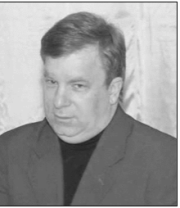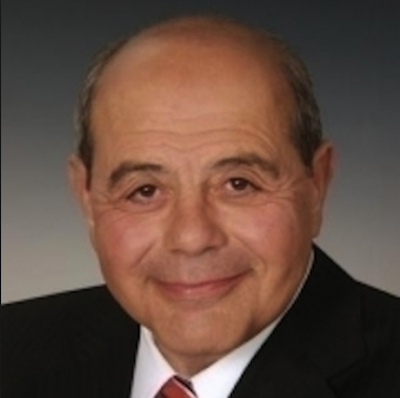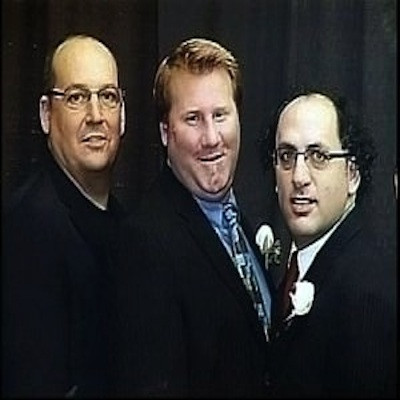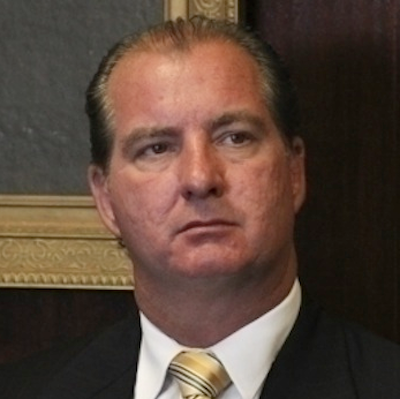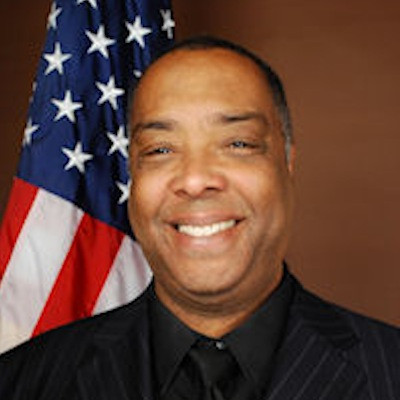Scoundrels Part 3 Chapter 6: McMansions
Monday, February 06, 2017
Each week, GoLocalProv will publish a chapter of the book Scoundrels: Defining Corruption Through Tales of Political Intrigue in Rhode Island, by Paul Caranci and Thomas Blacke.
The book uses several infamous instances of political corruption in Rhode Island to try and define what has not been easily recognized, and has eluded traditional definition.
The book looks at and categorizes various forms of corruption, including both active and passive practices, which have negative and deteriorating effects on the society as a whole.
GET THE LATEST BREAKING NEWS HERE -- SIGN UP FOR GOLOCAL FREE DAILY EBLASTBuy the book by CLICKING HERE
PART III
SITUATIONAL POLITICAL CORRUPTION
The third form of political corruption is situational corruption. Like its close relative, circumstantial political corruption, the acts that define situational corruption may not be illegal. However, those corrupt acts are just as corrosive to society and the political process as the acts of circumstantial corruption. The violation of the public trust through the unjust acts of situational corruption often results in financial and personal hardship to the victim. There is a resulting loss of confidence by the victim, perhaps the entire society, in the political system and government becomes the object of distrust and ridicule. Even the honest service of hard working government officials is diminished as all politicians tend to be painted with the same broad brush strokes of their corrupt brethren. The two examples of situational corruption described on the following pages are endemic of a society motivated by greedy insiders who are more concerned about their own political sustenance than the well-being of the community they serve. The actions may be despicable and cause pain and suffering to the victims who are often times asking for no more than they rightfully are owed under the laws that govern the situation they find themselves in.
6
McMANSIONS
The Johnston Zoning Board
Carol LaCourse had once owned her own home in Lincoln, but facing the reality of her second husband, Paul, being disabled from asbestosis from his years of work in the shipping industry, and the ever rising costs of health care and home ownership, the insulin dependent sixty seven year old decided that it was time to sell. The youngest of her six children, daughter Michelle, purchased the house in 2002 netting Carol a small profit. She and Paul temporarily moved in with her daughter Margie and son-in-law Paul Caranci (the co-author of this book.) The plan was to remain in Paul and Margie’s North Providence home until her application for senior housing was approved allowing Carol and Paul LaCourse the opportunity to live in a North Providence government subsidized apartment. However, just over a year later, Paul LaCourse died derailing Carol’s desire for senior housing.
On July 30, 2004, using most of the money she had received from the sale of her home, Carol purchased a small house and an adjoining lot in the Town of Johnston, just a few miles west of her daughter Margie. The seller, Thomas Blacke (also a co-author of this book), inherited his boyhood home following the death of his parents. Tom was married and living in Cranston so he decided to sell the house and the adjoining lot. He was told repeatedly by officials of the Town of Johnston that the vacant lot, despite being a separate lot of record that was taxed as a “buildable lot” was in fact not buildable without benefit of a zoning variance. After his Realtor confirmed the need for a variance, Blacke was forced to sell the two properties as a single package.
The Town of Johnston lies just west of North Providence and was incorporated in 1759 taking its name from a local politician, Attorney General Augustus Johnston, perhaps demonstrating just how seriously the Town regards its politics. Today, its approximately 28,000 residents enjoy relative financial stability emanating in part from a growing tax base. The improving financial outlook of the town, plus the fact that the house was situated right between a string of small, older homes lying to the north and some very large, much newer homes to the south and west made the property the perfect investment. The house “will appreciate in value,” she thought, “and the proceeds should be enough to provide for my burial costs when the time comes.”
The petite 4’11” woman found the four-room, two bedroom house on the smaller front lot the perfect size. It was relatively easy to keep clean, and had a small yard where she planned to install a white picket fence to provide a secure play area for her future great grandchildren. The additional one-plus acre vacant lot behind the house provided the perfect space for a retirement home of her daughter Margie, her son-in-law Paul and their children Matthew and Heather. Building a house on that lot might require minor relief from the zoning code, relief that is generally relatively easy to obtain. If permission was denied, then she would simply build a large addition to the existing house which would be used by her daughter with the smaller house serving as an in-law apartment for her. But, as often happens, the plans changed.
Just months after moving into the small house, she determined that living alone did not suit her. She missed the hustle and bustle of her daughter’s house and decided to move back into their home. In an accommodation that seemed to benefit everyone, she sold the small house to her son-in-law who provided a home for his son Matthew and daughter-in-law who was now pregnant with Paul and Margie’s first grandson. Over the course of the ensuing years, a combination of the declining Rhode Island real estate market, Matthew’s divorce from his wife and a dramatic decrease in Paul’s salary led to the home’s foreclosure by the bank. Matthew and his family, which by now included three children, joined Paul and Margie in their North Providence home reuniting the entire family under one roof.
With no money left in the bank and her only asset the undeveloped lot on Bishop Hill Road in Johnston, LaCourse once again started to think of her own death and the financial burden that it would place on her family. The now seventy-six year old decided to sell her land as a means of providing for her current and expanding medical needs as well as her future internment expenses. The property was listed with Affiliated Real Estate in 2010 for an asking price of $60,000. The price was below market value, but thought a fair price considering that the buyer may need to incur the expense of appearing before the zoning board for a variance before building on the lot. The next several months saw plenty of interest in the lot, but no offers. Over two years passed without an offer to purchase the property.
During this time, Carol’s son-in-law Paul’s ninety year-old father passed away, leaving his 88 year-old mother Anna alone in her home. Unwilling to consider nursing home care as an option, a decision was made to have Anna move in with Paul’s sister Linda and her family. Linda and Dennis Corsini had been married since 1970 and together they had one son, Michael, who at age 31 lived in the lower portion of the raised ranch with his girlfriend Becky. Their North Providence home, with its one full bath and two bedrooms, was just not big enough for the five people who now occupied it. Linda, Dennis and Michael decided to build a larger house that would be big enough for both the existing family members and any new family additions that time might produce.
After a family meeting, Carol LaCourse decided to sell her land to Michael for the sum of $10,000. Though assessed by the Town of Johnston for $66,000, Carol determined that the $10,000 would provide for her burial and allow Michael to build his new home using the equity in the land as part of the down payment. Prior to applying for the zoning variance that town officials said was required before the issuance of a building permit, however, Michael would need to pay 3 ½ years of property tax arrearage. He also agreed to absorb the $780.00 cost of the application to the Johnston Zoning Board for the variance from the zoning code’s 140’ frontage requirement. Michael's total financial committment was $9,181.70.
The Johnston town government is run by an elected Mayor and five elected council members. There is an elected school committee and various appointed boards and commissions including the Johnston Zoning Board of Review. While the elected council is responsible for zoning changes, minor variances from, and exceptions to, the Town’s Zoning Ordinance are left to this 5-member appointed body. Although variances may be considered minor relative to large-parcel zone changes, they are no less vital to those appearing before the Board as they can have a profound impact on the lives of those who come before it.
Rhode Island general law itself recognizes the significant consequences of a zoning board’s decisions and therefore sets very specific legal standards for boards to follow when approving or denying a zoning variance or exception. The criteria that zoning boards must consider when deciding issues of dimensional relief include assurance that the relief sought is due to the unique characteristics of the subject land or structure and not due to the general characteristics of the surrounding area or the physical or economic disability of the petitioner. Likewise, consideration must be given to the cause of the hardship to assure that it is not the result of any prior action of the petitioner and does not result primarily from the desire of the petitioner to realize greater financial gain. Zoning Boards are required to ensure that the granting of the requested variance will not alter the general character of the surrounding area or impair the intent or purpose of the zoning ordinance or the comprehensive plan upon which the ordinance is based, and that the relief to be granted is the least relief necessary. In other words, relief may not be granted to allow for a duplex when a single family home is an option. Finally, the board must determine that the hardship suffered by the owner of the subject property if the dimensional variance is not granted amounts to more than a mere inconvenience.
Not wanting to have the zoning application rejected on some technicality, Paul, acting as a Realtor on behalf of his mother-in-law Carol LaCourse, spoke to his long-time friend Bernie Frezza, the Chairman of the Johnston Zoning Board, seeking advice on the procedure for applying for a variance in Johnston. Though Paul had served on the North Providence Zoning Board of Review for eight years, and the North Providence Town Council for almost seventeen more, he knew that each municipality had its own particular procedure for such applications. Chairman Frezza advised Paul that it sounded like a routine enough request, but instructed him to see the Town’s Building Official, Ben Nascenzi, for complete instructions and application forms. Bernie offered to call Ben and ask him to “walk you through” the process and provide everything that would be needed to make the application. Frezza also advised Paul to call Councilwoman Stephanie P. Manzi, the area councilperson, as a courtesy to alert her to the impending application. A former councilman, Paul certainly understood that no elected official enjoys being surprised by residents asking about a project that is completely unfamiliar. He would extend the courtesy to Manzi.
Paul, his nephew Michael Corsini and Michael’s girlfriend Becky, met with Nascenzi at the Building and Zoning Office in late April 2013. Nascenzi reviewed the plat map and associated information He noted that the lot lacked adequate frontage and advised the would-be buyer that he would in fact need to complete a zoning application, identify and notify the list of abutters, pay the associated fees, and present his case to the Zoning Board which next “meets on May 30th.” He advised that the petitioner retain the services of a registered land surveyor as the application required the submission of a class 1 survey, as well as an attorney who knows how to identify the property abutters that required notification. When asked, he suggested attorney Alfred Russo Jr. and surveyor Nick Veltri as two professionals that have significant experience appearing before the Johnston Zoning Board and can make the process very easy. His suggestion was taken and Russo and Veltri were retained within the next couple of days; Russo at a cost of $1,000 and Veltri, $2,400. Each of these fees were paid by Michael Corsini bringing the gross amount of his investment to $13,361.70. With the information needed to proceed in hand, Caranci was ready to follow Frezza’s final piece of advice by calling Councilwoman Manzi and informing her of the impending application in her district. Despite several phone calls, some leaving very specific messages, none were returned.
Veltri did an amazing job accommodating the short application window and the completed zoning application, along with the list of abutters, proof of notification, and the class 1 survey, were submitted to the Town on April 25th for hearing on Thursday May 30, 2013.
Veltri and Russo agreed with Nascenzi’s assessment that there was no basis for denial of the application since it met all the criteria necessary for the zoning board’s approval and sought the least relief possible to make the land usable – the petitioners simply needed to wait for the hearing.
All that changed during the week of May 23rd, however. Paul Caranci was at work in his office when he received a text message from Bernie Frezza asking if Paul would be at the State House that day. Paul knew that such an urgent message could not be good news and his suspicions were confirmed in a phone conversation when Bernie told him there was a problem with the application. It seems that one of the neighbors, in fact the person that purchased from the bank the very house that Paul had lost to foreclosure, was objecting to the granting of the variance. “But there are no grounds for denial,” Caranci protested. Frezza said that grounds didn’t matter. It was political and the new owner of 19 Bishop Hill Road was none other than Council President Robert Russo. He had informed Mayor Joseph Polisena of his objection and the Mayor made calls to the Board inquiring about the variance. Frezza sounded downhearted and didn’t hold out much promise for approval in light of the neighbors objections.
Caranci contacted the Corsinis to tell them of the latest developments and explained the circumstances to attorney Russo. While most realized that the hearing would probably not favor the applicant, the Carancis and Corsinis prepared their case to be presented to the Board.
Several people filed into the Johnston Senior Citizen Center at 1291 Hartford Avenue in Johnston. This was the former site of the once popular El Marocco Club, a fine dining and night club facility of days gone by. Tonight, it was the site of the May 30th meeting of the Johnston Zoning Board. Several cases donned the docket and each went exceedingly well for the applicant ending in approval. Among those present to observe the proceedings was Council President Robert Russo, prompting one attorney who appears at most meetings to say, “Why is Russo here? He never attends these meetings.” Paul and his family knew why he was there! The only question they had was whether or not he would offer his own testimony or simply impact the vote by his presence.
Chairman Frezza called the case of Carol LaCourse and Attorney Russo introduced the application reciting all the required points of law. He noted the presence of applicant Michael Corsini, Paul Caranci, his expert real estate witness, and land surveyor, Nick Veltri.
Russo began to describe the project when he was interrupted almost immediately by an incredulous Anthony Pilozzi. “What were those dimensions again?” Pilozzi asked. “Forty seven by eighty seven, I think,” Russo responded. With that, the verbal assault on Russo began essentially derailing any semblance of an ordered hearing on the salient points. Though the footprint of the proposed construction is not one of the criteria on which the Board can decide a case if all front, rear and side lot restrictions are met, the dimensions of the home became the entire focus of questioning by the Board. And the questioning was intense! Russo tried desperately to bring the discussion back to the relevant facts explaining how the variance, if granted, would conform to other properties in the area. “There are two means of ingress and egress to the property,” Russo noted. “One is 30’8” wide. It is an easement on the right hand side. The other is 21’9” on the left hand side of the property…Again the code here requires 140’ of frontage. If you look at the assessors map Mr. Veltri provided here this evening and look at all of the lots that abut Bishop Hill Road, only three in that vicinity have the required 140’. All of the other properties have less. In fact, some of them have far less.”
Pilozzi interrupted again saying that two separate areas of frontage cannot be combined and therefore, the actual frontage of the lot was only 30’, not the 52’ being alleged. Russo pointed out that zoning law does not require that the areas of frontage be contiguous to be considered part of a lot’s frontage, but a belligerent Pilozzi replied, “I see your point, I mean, but I’m not, I’m looking at it a different way. I’m looking at it - I want to interpret the zoning law the way I see it.” Caranci glanced at his wife and sister. “Can he be serious?” he thought to himself.
Pilozzi continued saying he thought the 30’ ingress would cause a problem for public safety vehicles and endanger the safety and welfare of the neighborhood because at least 50’ is required to turn a fire truck around. Russo was unable to get a word in over the excited voice of Pilozzi. Eventually Chairman Frezza asked Veltri if there was enough room for a fire truck to turn around. Veltri pointed out that unlike all the other properties that might require a fire truck to actually turn around, this property has a circular driveway that allows the truck to continue in the same direction to access and egress the property. This testimony rendered Pilozzi’s objection moot.
Russo tried to continue with his presentation, but Pilozzi, now joined by the Board’s attorney, Joseph Ballirano, kept interrupting with one irrelevant question and/or statement after another. They tried to make an issue out of an easement owned by the petitioner but used by others to access rear land despite its irrelevance to the application being heard. Even the property address noted on the petition became an issue. Vacant land is typically identified by the street number of the closest property since no street number is assigned to vacant lots. In this case 19 Bishop Hill Road, the address of Council President Russo’s rental house, was used because it is the house immediately in front of the vacant lot and once owned by Caranci. Pilozzi felt that since there was another Bishop Hill property using the number 19, emergency responders would be confused by this property being identified as such. Russo had to point out that this would not be the number of a new house that was being proposed for development but rather it was simply the number being used on the application to identify the, as yet, unnumbered parcel of land – “a concept that should not be difficult for a zoning professional to grasp, but apparently is!”, Caranci thought.
Eventually, discussion turned to an appropriate area of concern, conformance with the neighborhood. Incredibly, Pilozzi turned even that discussion into a joke proclaiming that since the older homes in the area have driveways of between 60’ and 100’, the proposed development would not conform. Russo countered. “I don’t see that Mr. Pilozzi. The lot in question has 55,779 square feet. It is the largest piece of residential property in that neighborhood.” Again, he was interrupted with a pointless question and not allowed to continue his thought.
Board member Joseph Anzelone joined the discussion. “[The application] doesn’t indicate wetlands, but they think there may be wetlands,” he said. “What in God’s name is he talking about?,” Caranci thought. “Where would the wetlands be?” Veltri responded that the property has no wetlands. It is basically upland and is surrounded by developed property which would be indicative of property devoid of wetlands. Pilozzi perceived an opening however and pounced noting that the application did not have results from a PERK test (A PERK test determines availability of well water, but this property had town water available to it.) or an ISDS permit (an individual septic design system provides for sewage waste disposal when municipal sewer systems are not available in an area). The inference was that the lack of a PERK test and an ISDS permit might be indicative of wetlands. However, neither the test nor the permit were required as part of the zoning application. A PERK test is not required because the property has access to public water and the ISDS permit is not required because it involves significant engineering work and is therefore quite expensive. Such tests results and permits are typically procured once the building permits have been obtained which is well after the zoning board hearing. Consequently and ISDS permit is rarely sought before zoning approvals are received and seldom included with an application for a zoning variance. Finally, as if the discussion could not get any more absurd or deviate any further from the Board’s authority, the members began asking about the number of bedrooms and bathrooms the proposed dwelling would have. Russo again tried to bring the members back to a relevant discussion about the issues at hand, but the session began to degenerate into a one-sided shouting match with Ballirano and Pilozzi clearly showing their bias against the application and exerting intimidation factors to encourage the petitioner’s silence. At least that’s how the petitioners viewed it!
Testifying as a real estate expert, Paul Caranci noted that the plan is for a single family house, the least relief possible. Board attorney Ballirano interrupted. “This design is least relief necessary as an expert under oath? This design is the least relief that this applicant can ask for? Are you serious?” he screamed. Caranci remained calm responding, “A single-family dwelling…” Ballirano again interrupted him mid-sentence. “Single family use with four bedrooms is the least relief necessary. That is ridiculous!” Caranci continued, “The law defines the least relief as a use of property not the number of bedrooms or bathrooms it might have.” “It is the totality of circumstances,” Ballirano shot back.
In the end, the Board voted 4-1 to deny the application. Pilozzi put forward an incoherent and irrelevant motion saying, “First of all, it is excessive relief because of the size of the house with this particular plan. I mean the number of bedrooms are excessive for that neighborhood. The number of bathrooms there are going to be a septic system there which we didn’t touch on too much, no ISDS permit has been granted by the Department of Environmental Management bring up the question of water which two of the abutters are concerned with. It is just not the site for it. It is a buildable lot. Make that clear for the record. But it is not the site for this particular plan: Four bedrooms. It is just probably going to be a beautiful house. It just does not fit at that site. There is no way it fits in that conformance in that neighborhood. The excessive relief, there is also height relief, they need four feet one of the abutters is also concerned with that. Now to go into, it doesn’t – there is an adverse impact on the neighborhood with a house of this size. It is not in conformance with the neighborhood and I don’t think it would be more than a mere inconvenience to deny this. I know the Viti doctrine is not in place anymore, but if we were to deny it, it is not more than a mere inconvenience because they have the rightful use of the property. It is a buildable lot. So I will base my findings of fact on what I said this particular plan is just too large for that site. It is not in conformance with the neighborhood, and certainly it is not in conformance with the least relief necessary. It is a huge house and it just doesn’t fit there. That is the basis for my motion to deny.”
The second for the motion, offered by member Joseph Anzelone was equally strange. In his second, Anzelone offered excerpts from a document that was not even introduced into the record and one that Caranci and Corsini didn’t even know existed. It appears that Town Planner Pamela Sherrill provided a letter to the Zoning Board recommending approval of the variance because of the applications conformance to the Town’s comprehensive plan and the neighborhood. Incredibly, however, Anzelone skipped the most salient points and pointed to a solitary sentence in which Sherrill noted that upon granting of the variance the petitioner will need to complete an ISDS on the property to ensure that there are no wetlands. As mentioned earlier, such permits are generally sought after zoning board approval for construction is granted. Yet, as if not wanting to leave the issue alone, Pilozzi tried to infer that the lot may contain wetlands paraphrasing a very select sentence of the Town Planner’s letter suggesting that further site evaluation be done because of the slope of the property. Neither Anzelone nor Pilozzi ever bothered to note that the Town Planner had acknowledged conformance and recommended approval. The actual letter reads, “The proposed single family residence with public water and private OWTS appears to be consistent with the Town of Johnston Comprehensive Community Plan, including the following practices: Policy LU-7b Encourage compatible infill developments that are scaled and designed to fit their surroundings in the urbanized area. Policy LU-8b Achieve a harmonious relationship between residential land use patterns, non-residential uses, and the natural landscape in order to preserve the Town’s environmental resources for the benefit and enjoyment of present and future generations.”
The letter concludes, “The proposed infill development would be consistent with the character of the single family neighborhood and therefore would be consistent with the comprehensive plan.”
At the conclusion of the meeting, attorney Ballirano approached Caranci who was talking with his family members, and offered an apology saying, “Sorry about all this. You’ll win this in court.”
The petitioners retained the services of the Law Offices of Michael Kelly, PC to file the appeal. Attorney John Mancini explained the process noting that an appeal of this type can take anywhere from 12-24 months to go through the courts and it isn’t cheap. He required a $5,000 retainer noting that if the cost exceeded that, the balance would be due as the costs were incurred. The LaCourse, Caranci and Corsini families discussed the options. With the advancing age of the two mothers, time was certainly a concern and the potential cost was equally concerning. But it was felt that there wasn’t a choice. Not appealing would render the land unusable, unsaleable, and essentially worthless. There was far more to lose by doing nothing. The decision was made!
On November 6, 2013 LaCourse filed with the Rhode Island Superior Court a memorandum of law in support of her appeal. In hearing such appeals “the court shall not substitute its judgment for that of the zoning board of review as to the weight of the evidence on questions of fact. The court may affirm the decision of the zoning board of review or remand the case for further proceedings, or may reverse or modify the decision if substantial rights of the appellant have been prejudiced because of findings, inferences, conclusions, or decisions which are:
1. In violation of constitutional, statutory, or ordinance provisions;
2. In excess of the authority granted to the zoning board of review by statute or ordinance;
3. Made upon unlawful procedure;
4. Affected by other error of law;
5. Clearly erroneous in view of the reliable, probative, and substantial evidence of the whole record; or
6. Arbitrary or capricious or characterized by abuse of discretion or clearly unwarranted exercise of discretion.”
This judicial review must be measured against the zoning board’s obligation under the law in reviewing applications for dimensional relief. The criteria are spelled out in the town’s zoning code and are five in number. First, the board must ensure “that the hardship from which the plaintiff seeks relief is due to the unique characteristics of the subject land or structure and not due to a physical or economic disability of the plaintiff.” Second, “that the hardship is not the result of any prior actions of the plaintiff and does not result primarily from the desire of the plaintiff to realize greater financial gain.” Third, “that the granting of the requested variance will not alter the general character of the surrounding area or impair the intent or purpose of the zoning ordinance or the comprehensive plan upon which the ordinance is based. Fourth, “that the relief to be granted is the least relief necessary,” and fifth, “that the hardship suffered by the owner of the subject property if the dimensional variance is not granted amounts to more than a mere inconvenience.
Clearly, the memorandum points out citing relevant case law, the petitioner met that burden leaving the zoning board no choice under the law but to grant the petitioner’s request. The memorandum continues, “…the Board’s decision is in violation of constitutional provisions in that it operates as a taking of the Appellant’s Property…The Board’s decision prevents the Appellant from constructing any type of home on the Property, if she is required to seek relief as to frontage, as she was required as part of the Application. This prevents the beneficial use of the Property, as the Appellant would not be able to construct a home, which is permitted by right, in her R-40 zone, despite having the requisite lot area to do so, and despite having paid taxes on such a ‘buildable lot,’ as the Board deemed it to be. Even Board member Frezza recognized that: ‘I hope you realize that something is going to go there. They have a right to put a house in there.’ ” The memorandum also describes the Board’s decision as “an excess of its authority” in that it “improperly focused on the use of the property, which was permitted, and not the dimensional relief requested.” The memorandum rightfully notes that “throughout the entire hearing, and in its decision, the Board improperly focused on the use of the property, which is a permitted use” in the zone. “In fact, the Board, through his Solicitor, who testified and spoke on the application on numerous occasions throughout the hearing specifically stated that: ‘The concerns so far with the application are not the lots. It’s the use that you are proposing with that specific plan….’ ”
Finally, the memorandum alleges that “the Board’s temperament and decision were politically motivated and an abuse of discretion.” In support of that claim the petitioner points to the complete meeting transcript which “reveals troublesome treatment of the Applicants by the Zoning Board members and its counsel” because “Councilman Robert Russo is a direct abutter to the Property, owning, in part, lot 99.” The memorandum further alleges that “the Board had a predisposition towards the application and did not consider the application in a fair and impartial manner as is required by any quasi-judicial board.”
The cost of situational political corruption is clear. The active corruption of those zoning board members who voted to deny the petition for reasons thought to be political, and the passive corruption of those members who were not part of that decision but supported the motion to deny for some unknown reason, possibly even out of fear of offending another politician, had a profound negative impact on three families. The Corsini’s continued to live in cramped quarters until Michael purchased a new home for himself and Becky. LaCourse failed to receive proceeds of the sale of the land leaving her to struggle with her monthly medical payments and property tax payments for an additional two years. She invested another $7,000 into the cost of the appeal. All totaled, LaCourse spent an additional $10,000 of borrowed money that will never be recouped.
On April 11, 2014, RI Superior Court Associate Justice Brian VanCouyghen issued his ruling vacating the decision of the Johnston Zoning Board. Rather than focus its attention on the merits of the case presented, however, the Court narrowed its attention to procedure noting, “This court finds that the notice provided to the public was inadequate because it failed to describe ‘the precise character of the relief sought’ by the Appellant. In particular, the notice failed to mention that Appellant was seeking dimensional relief from the height requirements of the ordinance.” Because the height relief was distinctly requested by the Appellant and part of the Board’s decision to deny relief, the Court viewed the Town’s omission as inadequate public notice. This fatal flaw in the filing meant that the Board did not have the authority to act. The failure to provide proper notice, the Court ruled, renders the Board’s decision a nullity creating a situation that relieved the Court of its obligation to address the merits of the appeal.
The original zoning application submitted to the Town of Johnston by Nick Veltri on behalf of the petitioner clearly requests relief from both frontage and height requirements. Once received, the Town failed to advertise it properly yet, the Zoning Board members discussed both forms of requested relief at the hearing creating the condition that led to the Court’s decision. Because the Court ruled that the discussion of height relief shouldn’t have taken place, it nullified the meeting. LaCourse, to gain the required relief, would have no alternative but to begin the entire process again, filing an application for a new zoning board hearing. The cost and time involved in doing that with no guarantee of a different outcome, and having already lost the potential buyer, were prohibitive and LaCourse decided instead to relist the property for sale subject to the potential buyer obtaining any necessary permits.
As if to add insult to injury, the attorney that handled the Zoning Board appeal in Superior Court advised LaCourse that there was no need to appeal to the Zoning Board for the frontage because it was a pre-existing condition that was not being extended by any action of the property owner. In fact, she said, the Johnston Building Official should have advised the buyer of that fact and issued the permit in the first place.
A purchase and sales agreement to sell the land to a speculative investor was signed in December 2014. The sales price was 50% below the assessed value because the developer feared what the Town of Johnston may require of the developer before allowing construction on the site.
As it turned out, that investor obtained a building permit from the Johnston Building Official to build a house similar to the one proposed by Michael Corsini, albeit a little smaller. The developer obtained the permit without the intervention of the Zoning Board and without the objection of the same Town Building Official who had previously informed Corsini that Zoning Board relief would absolutely be required. The closing of escrow was held in April 2015 a full two years after the original application for a zoning board hearing was submitted by LaCourse.
Later in that same year Ben Nascenzi was accused of racism in delaying the issuance of building permits in a case in which the facts seemed eerily familiar. On November 24, 2015, GoLocalProv.com posted a video in which Nascenzi was “heard making a racially charged statement regarding a church pastor’s attempts to rehabilitate a historic church in town. In an expletive-laden phone conversation with his supervisor and the contractor on the project that was taped, Johnston Building Inspector Ben Nascenzi can be heard referring to Reverend Dr. Chris Abhulime as ‘the fucking black owner’ of the former historic Belknap Church.” Abhulime told GoLocal that since purchasing the building on 500 Greenville Avenue in Johnston this past spring, that he has been stopped in his attempts to rehabilitate the property.” Abhulime explained that after he decided to purchase the property, “which had been used as a church for a hundred years, we were then subject to zoning approval. So then we applied for zoning to use it for a church – we had an attorney and surveyor, we submitted the application, and they gave us an appointment for June 25th. We paid the fees, the attorney, the surveyor. At the meeting, there appeared to be plenty of time, there were people ahead of us - had good conversation with the zoning officials, so when it came our time, it didn’t seem like there’d be an issue. But then it became obvious they were going to deny us. It only lasted 4-5 minutes, and they didn’t tell us why it was denied. Most of what they said was, ‘Are you done, are you done? That is not how a zoning hearing should be held. We paid quite a lot just to get dismissed within five minutes,”Abhulime said.
Abhulime explained that there is an appeal in RI Superior Court, “so we went ahead and purchased it.” After informing his parishioners of the purchase, several drove to Johnston to check out the building. A couple of days later, Abhulime said he received a call from Nascenzi asking “why I brought so many cars, so many black people, and said he authorized the police to act if we went back.”
The inspector, according to Abhulime, accused the Pastor of holding a service at the church, something Abhulime denies. “They couldn’t get rid of us through zoning,” the pastor said, “now they’re making it hard,” Abhulime concluded.
Regardless of the outcome of this case which is still ongoing, the allegations demonstrate the impact that unfettered power can have and how, once situational corruption is allowed to flourish and take root, it strengthens and becomes a force almost too powerful for the average citizen to overcome.
The cost of situational corruption, both active and passive as described in this story, is high. The actions of the Johnston Zoning Board, potentially motivated by a desire to appease a community leader at the expense of the citizens the board members are appointed to serve, are not unique. Similar scenarios are repeated in countless political jurisdictions throughout the United States almost on a daily basis. Only when those elected and appointed officials understand that such politically motivated actions do in fact constitute corrupt deeds, will there be any hope of a criminal judicial redress of active and passive situational political corruption.
Paul F. Caranci is a historian and serves on the board of directors for the RI Heritage Hall of Fame. He is a cofounder of, and consultant to The Municipal Heritage Group and the author of five published books including two produced by The History Press. North Providence: A History & The People Who Shaped It (2012) and The Hanging & Redemption of John Gordon: The True Story of Rhode Island’s Last Execution (2013) that was selected by The Providence Journal as one of the top five non-fiction books of 2013. Paul served for eight years as Rhode Island’s Deputy Secretary of State and for almost seventeen years as a councilman in his hometown of North Providence. He is married to his high school sweetheart, Margie. They have two adult children, Heather and Matthew, and four grandsons, Matthew Jr., Jacob, Vincent and Casey.
Thomas Blacke has devoted his life to marketing, media and public relations and currently runs his own marketing, PR and security consulting firm. He has worked on many high level political campaigns, served as a lobbyist, and has held leadership positions in the local Democrat Party. Thom is also a professional magician and escape artist who holds multiple Guinness® World Records for escape artistry with ten world records in all. Blacke is the Editor/Publisher of an international magazine and the co-creator of a TV reality show. This is his seventh book.
Related Slideshow: Rhode Island’s History of Political Corruption
Related Articles
- Scoundrels: Chapter 2, Real Estate Is Not the Only Thing for Sale
- Scoundrels: Chapter 1, Bugs in City Hall
- Scoundrels: Chapter 3 Part 1, Cash in the Dumpster
- Scoundrels: Chapter 3 Part 2, Brusini Suffers Personal & Business Setbacks
- Scoundrels: Chapter 4 “It’s Not My Loan”
- Scoundrels: Chapter 3 Part 3: Judge Domenic Cresto & Pre-Trial Shenanigans
- Scoundrels: Chapter 5 The Bloodless Revolution




